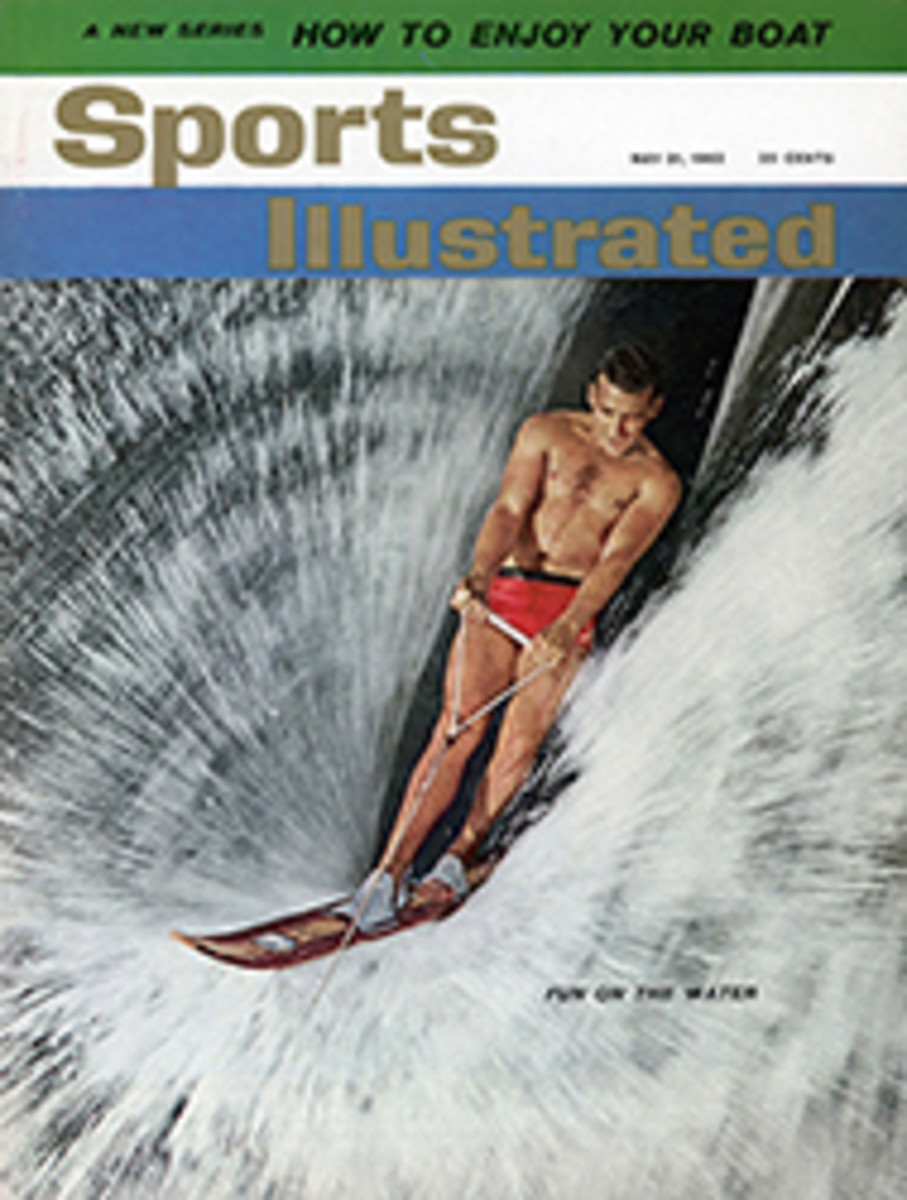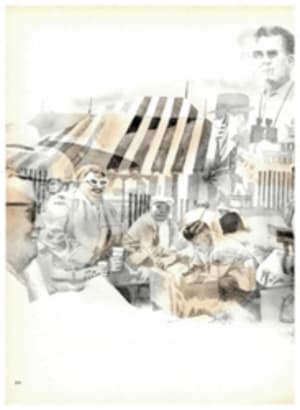
How to stay healthy and go into orbit
Though none of them would qualify as an Olympic candidate in any sport, the seven Mercury astronauts—six in their 30s and one who is 40—are perhaps the most physically and psychologically sound men in the U.S. In Washington several days ago Dr. Robert Voas, the behavioral psychologist who helped select the seven back in 1959 and has coordinated their rigorous training since, discussed the physical qualities that were sought, the athletic backgrounds of the seven selected and their current athletic programs.
"We weren't looking for weight lifters," said Dr. Voas, a lean, square-jawed man who wrestled and ran the mile at USC. "We were looking for men who had, among other things, the attributes of the cross-country runner: a mental set for a long task and high resistance to fatigue. We had to have men who were tough and wiry and who also had the ability to react quickly under stress after a period of inactivity. We got them."
The 32 volunteer astronauts were given their most exacting physical tests in the Aeromedical Laboratories at Wright Air Development Center in Dayton, Ohio. The tests—to determine such things as how efficiently a person's body used up oxygen—included stepping up onto a platform 20 inches from the floor and stepping down again once every two seconds for five minutes, pumping a stationary bike against increasing brake loads and walking a treadmill that kept getting steeper and steeper. Curiously enough, none of the seven selected was a cross-country runner, though Lieut. Colonel John H. Glenn Jr. of the Marine Corps, then 37 and the oldest, chose to solve his weight problem and get into hard shape by jogging two miles a day whenever the opportunity offered—a habit he still follows. And one of them, Lieut. Commander Malcolm Scott Carpenter, was a weight lifter.
As soon as training began, the four astronauts who smoked promptly cut down or stopped completely, and it is the hardly surprising opinion of Dr. Voas that they are in better condition now than when they started the program. They are interested in a wide variety of sports ("They're doers, not watchers," says Dr. Voas) and, whenever opportunities arise, are active to a surprising degree.
Barking like seals
Later when their training became more intensive, they were asked if they wanted a formal program of calisthenics. To a man they snapped "no!" and calisthenics were eliminated. Dr. Voas reasoned that as veteran test pilots they knew the necessity of staying in condition and that they were individualists enough to want to participate in sports they enjoyed. The only formal training they received was two weeks of scuba diving, the final exam being an underwater swim of a mile from launch to shore in murky Chesapeake Bay. The purpose of this was to accustom the astronauts to the water, the primary recovery area for a capsule; to get them used to weightlessness; and to teach them breathing discipline. The seven found scuba diving a lark as well as practical, however, and for a while greeted one another by barking like seals and clapping their hands in the floppety way seals clap their flippers.
The three most enthusiastic athletes of the seven are Glenn, Commander Alan B. Shepard Jr., who made America's first suborbital flight last May, and Carpenter, who is scheduled to make the next flight—a three-orbit shot like that of Glenn. At Admiral Farragut Academy in New Jersey, Shepard played football and baseball but at the Naval Academy he concentrated on rowing. Although he was the smallest man on the crew ("When he was bow oar he looked like the coxswain sitting in the wrong end of the shell," a friend has said), he rowed bow on the varsity a year, and in his final year was promoted to stroke. As an astronaut he water skis on one ski and is looking forward to skiing without any skis at all—if he can find a boat fast enough to pull him. An admirer of racing drivers, he tools around in a Corvette. He hits a long ball in golf, shooting in the high 80s, ice skates and plays handball. In acknowledgment of his interest in the latter, Shepard was surprised to find posted on the control panel of his capsule just before taking off a sign reading, "No Handball Playing in this Area." It had been placed there by Glenn, his backup pilot. (Turnabout is fair play. When Glenn was whizzing around the world in Friendship 7, he was surprised, on reaching into a survival kit near his right hand, to find himself holding a life-size model mouse. He dropped it and, weightless, it floated around inside the canopy. Commander Shepard had instigated the joke.)
Carpenter, a Coloradan whose early ambition was to be a horse rancher, is a horseman, swimmer, diver, tennis player, hunter and fisherman, as well as a weight lifter. A few months ago he and his wife Rene mastered the twist. He hunts deer with a bow and arrow and recently has had the opportunity to stay in shape by doing double front somersaults on a trampoline set up in one of the hangars at Cape Canaveral. It was Carpenter, one of the best of the astronauts at scuba diving, who rescued a rashly stunting skin diver off Grand Turk Island in the Bahamas the day following Glenn's trip. Seeing how far he could go down without a tank, the skin diver lost consciousness at a depth of 80 feet. Carpenter, aware that something might go wrong, went down after him and pulled him up. Glenn, who was out spearfishing, helped haul the diver into the boat.
Next to Glenn, Carpenter probably is the most concerned about his physical condition. (Before he went up last February, Glenn gripped banisters when going up or down stairs to make sure he wouldn't, by some freak accident, slip and break something and thus lose his chance for the flight.) "Scotty isn't the Muscle Beach type of cultist," says Dr. William K. Douglas, the astronauts' personal physician, "but he's waited so long for this flight he isn't going to let anything happen to him. If a little fat starts to build up above his swimming trunks, he'll work to take it off." Once, to demonstrate his condition, Carpenter let an admirer smack him with all her might in the stomach. Blowing on her hand, the lady reported he had a stomach like a stone wall.
The two astronauts who have made marksmanship and gun collecting their hobbies are Majors Donald K. Slayton and Leroy Gordon Cooper Jr. of the Air Force. Major Slayton has an impressive collection of light and heavy rifles, from .22 caliber to .30-30s. He likes to hunt anything, from varmints to bears, deer and boar. "In a high-pressure program like this," he said a while ago, "you simply have to get off by yourself and relax once in a while." Slayton also plays handball and—to alleviate the "erratic heart" which caused Project doctors to withdraw him from the May flight—jogs two or three miles whenever he feels slight palpitations, which is every two weeks or so. In addition, he is an archer, skier, fisherman and occasional volleyball player—he met his wife on a volleyball court in Germany.
Crack shots and cool golfers
Cooper, at 35 the youngest of the astronauts and the only one without combat experience, collects pistols and is a crack shot with this weapon. He is also fond of riding (his father runs a ranch in Colorado), and is, like Air Force Major Virgil (Gus) Grissom, who made the second suborbital flight, a hunter and fisherman. Grissom also plays a little golf and, when he has an opportunity, handball with Slayton.
Next to running, the greatest non-airborne enthusiasm of Glenn, who won 10 letters in high school in baseball, basketball and tennis and who played center on the Muskingum College football team, is water skiing. A longtime addict, he can maneuver on a turnaround ski, a slalom ski and a disk. "It's a vigorous activity that makes keeping in shape a real pleasure," he says. He regards tennis the same way. Commander Walter M. Schirra Jr., Carpenter's backup pilot, likes water skiing, piloting a motorboat, shooting a rifle and playing golf. Despite putting trouble ("Seems to me they make the holes too small," he observes), Schirra is a cool golfer who shoots in the high 80s.
"You have to remember," says Dr. Voas, "that part of the training program—such as squeezing out of a capsule in the rough Gulf of Mexico, taking a course in desert survival and getting whirled around in a centrifuge—is more physically demanding than any sport. Just getting into a tight-fitting space suit makes you work up a sweat. But the sport the seven like above everything is flying—which, you might say, is lucky for all concerned."
PHOTO
SCOTT CARPENTER, a fast man with a bow, shows his children how to loose arrow.

